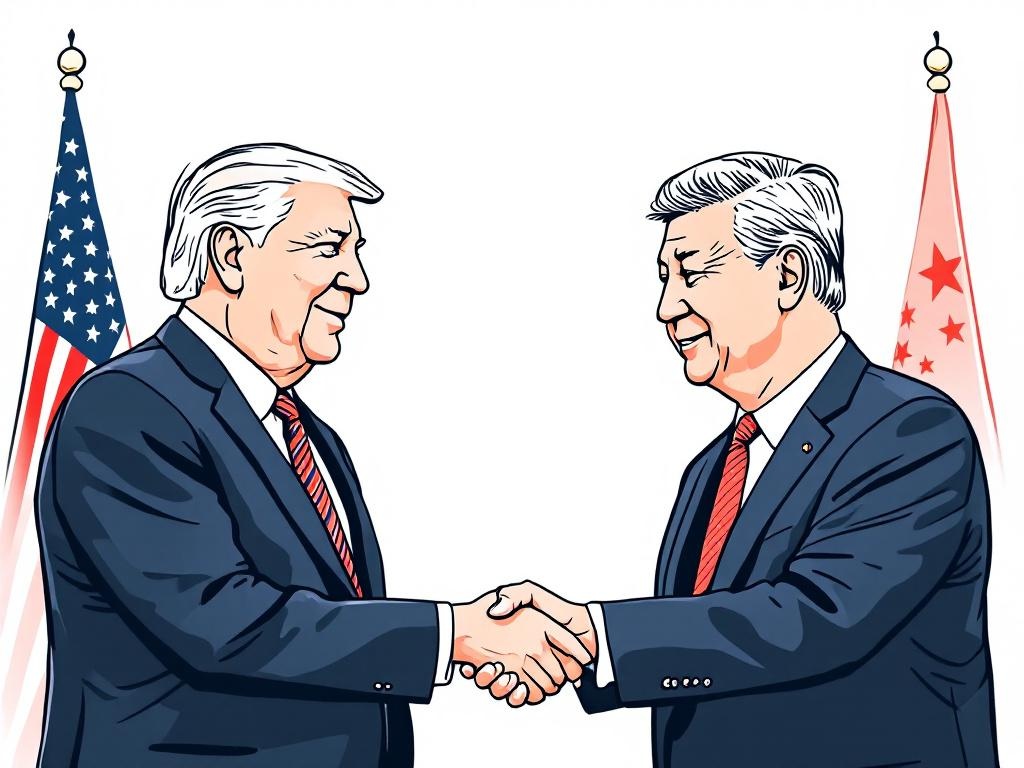U.S. and China Finalize Trade Deal Framework to Ease Tensions

Washington, D.C., Sunday, 26 October 2025.
On October 26, 2025, the U.S. and China finalized a trade deal framework, potentially averting a 100% tariff on Chinese goods and setting the stage for a Trump-Xi meeting.
Background of the Trade Negotiations
The recent announcement of a trade deal framework between the U.S. and China marks a significant step toward resolving ongoing trade tensions that have affected global markets for years. Following two days of talks in Malaysia, which concluded on October 25, 2025, both nations reached a preliminary consensus on key issues such as tariffs, export controls, and fentanyl-related negotiations [2][4]. The framework was finalized on October 26, 2025, and aims to prevent the imposition of a 100% tariff on Chinese goods, a measure that U.S. President Donald Trump had threatened to implement by November 1, 2025, should negotiations fail [1][3].
Key Elements of the Framework
The agreement outlines several key commitments from both sides. The United States has agreed to gradually phase out tariffs on Chinese goods over the next three years. In return, China has pledged to increase its purchases of U.S. agricultural, energy, and manufacturing products. This mutual concession is designed to ease the trade imbalance between the two countries and stabilize the global economy [5][6]. U.S. Treasury Secretary Scott Bessent highlighted the importance of these negotiations, noting that the threat of 100% tariffs provided significant leverage in reaching this substantial framework [1].
Implications for Future Relations
This framework sets the stage for a pivotal meeting between President Donald Trump and Chinese President Xi Jinping, scheduled to occur on October 30, 2025, during the APEC Summit in South Korea. This meeting, the first between the two leaders since Trump returned to office, is expected to not only finalize the trade agreement details but also address other critical bilateral issues, such as China’s role in the U.S. fentanyl crisis and the geopolitical situation in Taiwan [7][8]. The framework aims to extend the existing trade truce and resolve contentious issues to prevent further escalation [9].
Looking Ahead
Both nations have expressed optimism about the potential outcomes of this agreement. President Trump, in a statement, emphasized the comprehensive nature of the deal, which could pave the way for future negotiations on more complex issues. Meanwhile, China’s Vice Premier Liu He expressed satisfaction with the progress made, viewing the framework as an important step in resolving long-standing trade disputes [10][11]. As both countries prepare for the upcoming leader-level meetings, the global market watches closely, hoping for a lasting resolution to the trade tensions that have defined U.S.-China relations in recent years [4][12].
Sources
- www.nbcnews.com
- www.nytimes.com
- www.bloomberg.com
- fortune.com
- www.reuters.com
- thehill.com
- www.cnbc.com
- www.aljazeera.com